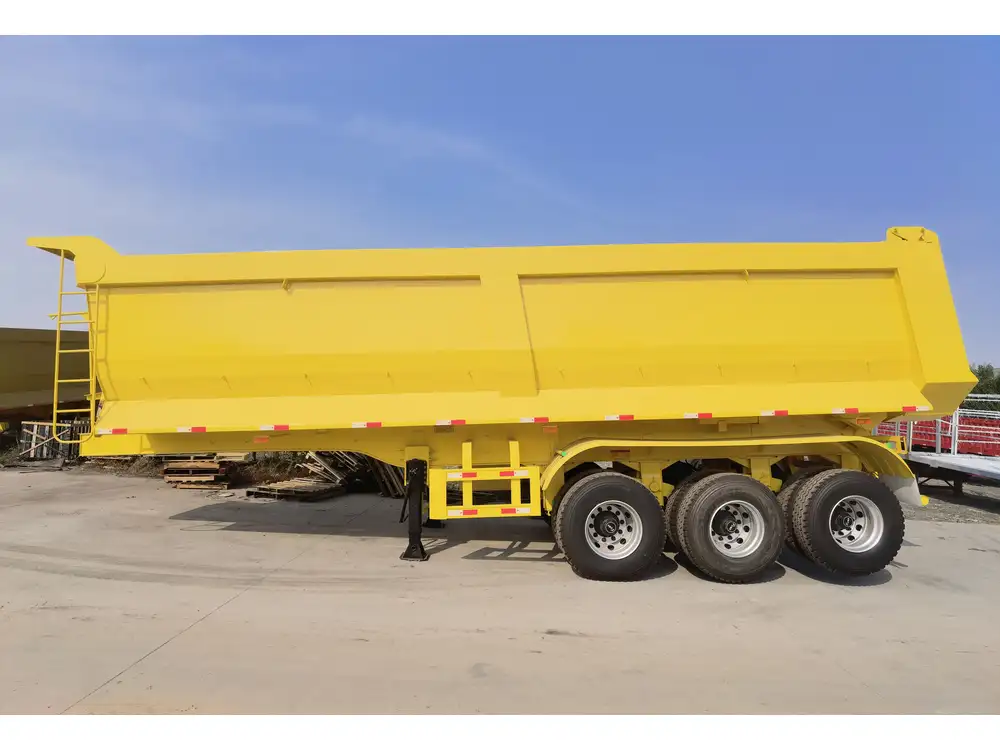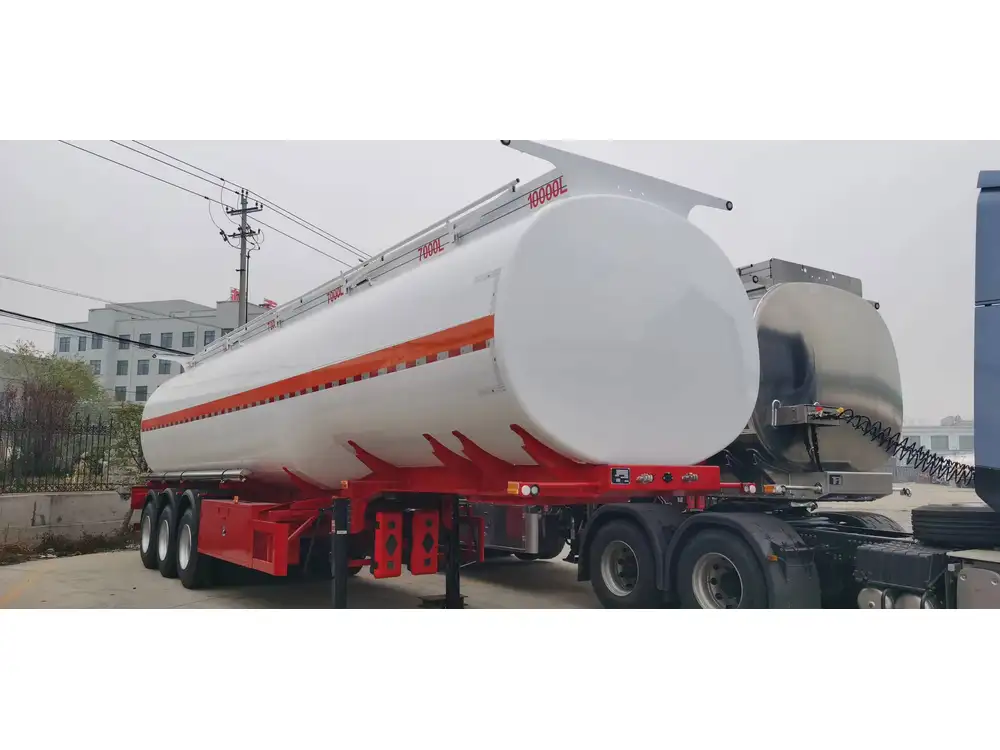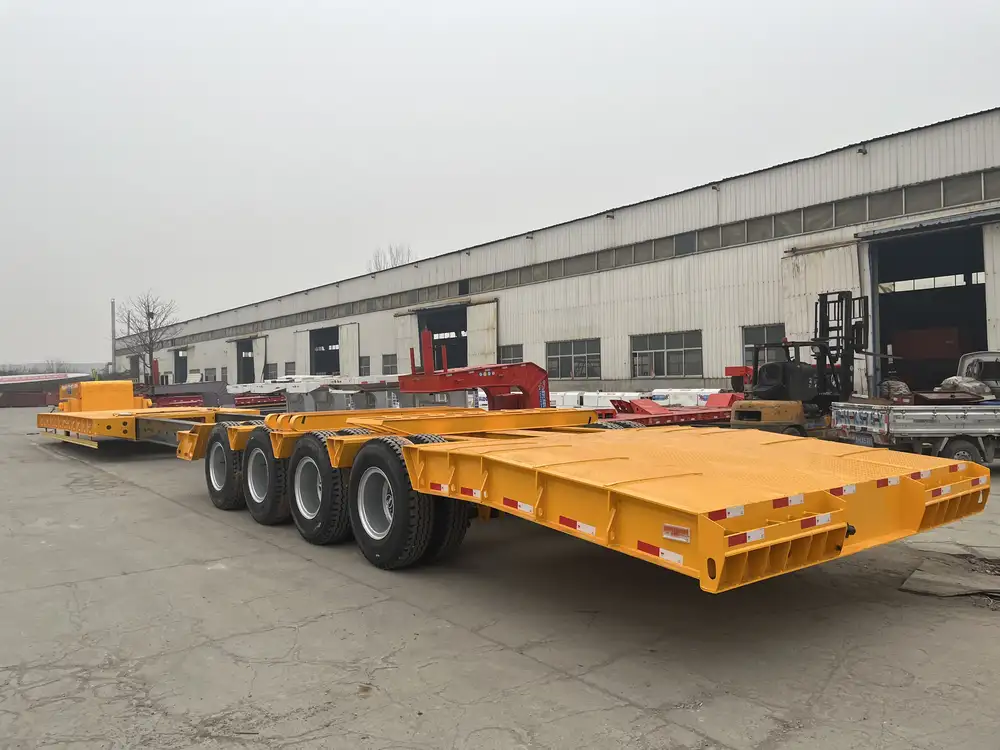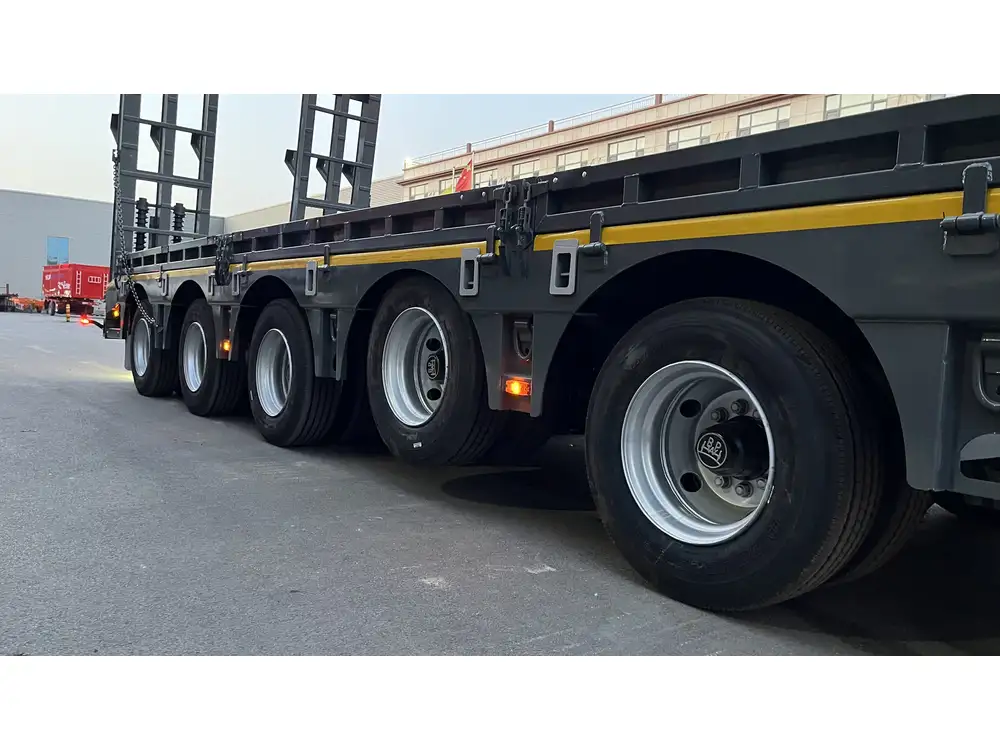When it comes to the transportation industry, knowing the specifications of semi-truck trailers is crucial for effective logistics management, load planning, and compliance with various regulations. A fundamental aspect of these trailers is their weight, as it significantly influences performance, safety, and legal requirements. In this article, we will delve into the various factors that affect semi-truck trailer weight, explore weight limits, and provide valuable insights for manufacturers, operators, and logistics experts.
What Determines the Weight of a Semi-Truck Trailer?
The weight of a semi-truck trailer is influenced by several factors, each playing a vital role in its overall specifications. Understanding these factors is imperative for optimizing load capacity and maintaining compliance with legal weight standards.
1. Type of Trailer
Different types of semi-truck trailers exhibit varying weights due to their design and intended purpose:
| Trailer Type | Average Weight (lbs) |
|---|---|
| Flatbed Trailer | 4,000 – 5,000 |
| Dry Van Trailer | 10,000 – 15,000 |
| Refrigerated Trailer | 10,000 – 15,500 |
| Tanker Trailer | 8,000 – 10,000 |
| Lowboy Trailer | 5,000 – 20,000 |
Flatbeds are typically lighter due to their simpler construction, while dry vans and refrigerated trailers tend to be heavier due to insulation and structural reinforcement.

2. Construction Materials
The materials used in the construction of a trailer greatly impact its weight:
- Steel: Durable and heavy, providing strength but adding to the overall weight.
- Aluminum: Lightweight and resistant to corrosion, often used in high-end models to reduce weight.
- Composite Materials: Emerging as a lighter and cost-effective alternative, these materials balance durability and weight.
3. Length and Dimensions
Length and dimensions significantly affect weight distribution and overall effectiveness. The Federal Highway Administration outlines specific regulations regarding trailer dimensions, which can implicitly impact weight. For example:
- A 48-foot dry van trailer typically weighs more than a 28-foot version due to additional structural components.
- Dimensions also affect aerodynamics and fuel efficiency, which indirectly ties back to weight considerations.
4. Equipment and Extras
Additional equipment such as ramps, winches, and securing devices contribute to overall weight. Understanding how much these accessories add to the total weight is essential for compliance with weight limits.

5. Load Capacity
The permissible weight when fully loaded varies based on design and manufacturer specifications. Considering the gross vehicle weight rating (GVWR) is essential:
- GVWR: The maximum weight a vehicle can safely carry, including the trailer’s weight and the load.
6. Empty vs. Loaded Weight
Often termed the “tare weight” of the trailer, this is the weight without any cargo. It’s crucial for determining how much freight can be transported without exceeding weight limits:
- A standard dry van trailer may weigh around 10,000 pounds empty, allowing for a maximum freight weight of approximately 30,000 to 34,000 pounds, depending on state regulations.
Weight Regulations and Compliance
Understanding the regulatory landscape surrounding trailer weights is essential for any trucking operation. Regulations are enforced at both the federal and state levels, leading to significant implications for manufacturers and operators.

1. Federal Standards
- The U.S. Federal Highway Administration (FHWA) stipulates that the maximum allowable weight for a semi-truck and trailer combination on federal highways cannot exceed 80,000 pounds, including the tractor’s weight.
- Axle weight limits play a critical role, where the maximum allowable weight per axle group varies (for example, a tandem axle can support a maximum of 34,000 pounds).
2. State Variances
Each state has its own regulations that can modify maximum permissible weights. Compliance requires awareness of regional laws:
| State | Max Weight (lbs) |
|---|---|
| California | 80,000 |
| Texas | 84,000 |
| New York | 80,000 |
| Florida | 80,000 |
These variations can lead to strategic planning for routes, load configurations, and operational efficiencies.
Calculating the Weight: A Practical Guide
Understanding how to calculate the weight of semi-truck trailers and their loads can mean the difference between legal compliance and costly fines. Here’s a structured approach:

1. Identify the Tare Weight
Begin by determining the tare weight of the semi-truck trailer. This information can usually be found in the manufacturer’s specifications or on a plate affixed to the trailer itself.
2. Measure the Load Weight
Utilize certified scales to weigh freight before loading onto the trailer. This step ensures that you remain within regulatory limits:
- Example Calculation:
- Tare Weight (Dry Van Trailer): 10,000 lbs
- Load Weight (Freight): 30,000 lbs
- Total Weight: 10,000 lbs + 30,000 lbs = 40,000 lbs
3. Consider the Weight Distribution
Proper weight distribution is critical for optimal handling and safety. Overloading one axle can lead to dangerous conditions and liability issues.

4. Check Compliance
Before hitting the road, verify that the total weight complies with both federal and state guidelines to avoid penalties.
Common Questions About Semi-Truck Trailer Weights
Addressing frequently asked questions can provide further clarity for users unacquainted with trailer weights:
1. What Is the Average Weight of a Semi-Truck and Trailer Combined?
A typical semi-truck and trailer combination weighs approximately 80,000 pounds, adhering to federal standards.

2. How Does Weight Affect Fuel Consumption?
Increased weight leads to higher fuel consumption, significantly affecting operational costs. For every 100 pounds added, fuel efficiency may decrease by 0.1%.
3. What Happens if I Exceed Weight Limits?
Exceeding weight limits can result in heavy fines and increased wear and tear on the truck, as well as safety issues and potential damage to roads.
4. Are There Any Exemptions to Weight Regulations?
Certain exemptions may apply to specific types of cargo or during special permits; however, these are limited and need prior approval.

The Importance of Regular Inspections
Maintenance and regular inspections are critical for ensuring trailer safety and compliance:
- Structural Integrity: Checking for signs of wear and damage that could affect weight distribution.
- Brake System: Ensuring braking systems function correctly contributes to overall safety.
- Tire Pressure: Maintaining proper tire pressure is not only a safety measure but also plays a role in maximizing weight capacity.
Conclusion: Navigating the Complex World of Semi-Truck Trailer Weights
In summary, comprehending the various facets of semi-truck trailer weights serves as a foundation for effective logistics management and operational efficiency. By understanding types, materials, regulations, and calculations related to weight, businesses can ensure optimal performance and compliance within the industry.
As the transportation sector continues to evolve, keeping abreast of changes in regulations, technology, and best practices will be vital. This knowledge not only facilitates legal compliance but enhances the competitive edge for manufacturers and operators, paving the way for successful operations in an ever-demanding market. By using this information wisely, we can navigate through the complexities of semi-truck trailer weight management efficiently and effectively.



